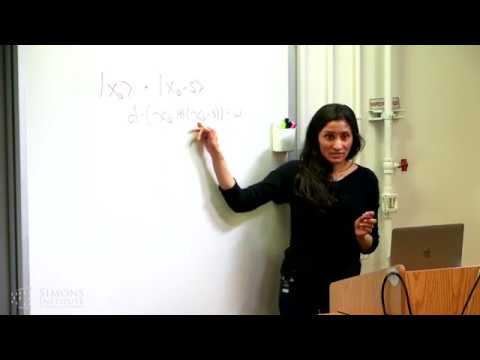Description:
Explore a comprehensive lecture on quantum computing verification and cryptography delivered by Urmila Mahadev from Microsoft Research at the Quantum Wave in Computing Boot Camp. Delve into the concept of classical commitment to quantum states and its implications for verifying quantum computations. Learn about testing quantum computers, interactive proofs, and post-quantum cryptography. Examine the role of trapdoor claw-free functions in quantum computing and verification, including their construction from Learning With Errors (LWE). Discover how to create superpositions, test for quantumness, and implement classical commitment protocols for quantum states. Investigate the process of delegating Hadamard basis measurements and enforcing structure with cryptography. Gain insights into the Pauli twirl in interactive proofs and its computational counterpart. This 56-minute talk provides a deep dive into cutting-edge research at the intersection of quantum computing and cryptography.

Classical Commitment to Quantum States
Add to list
#Computer Science
#Quantum Computing
#Cryptography
#Superposition
#Quantum Information Theory
#Post-Quantum Cryptography